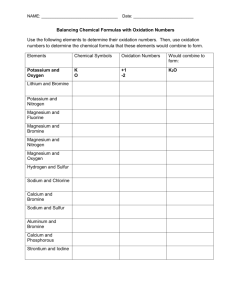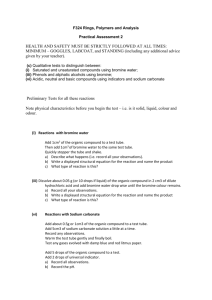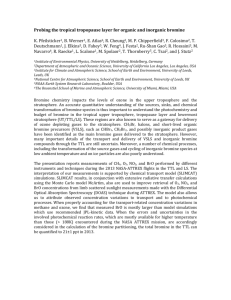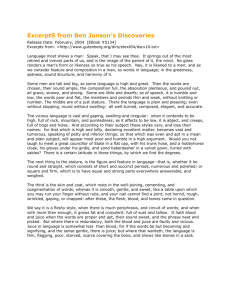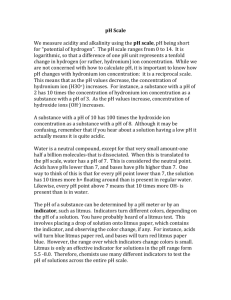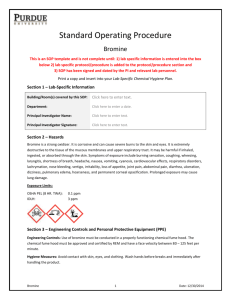Title: The tomato juice rainbow
advertisement
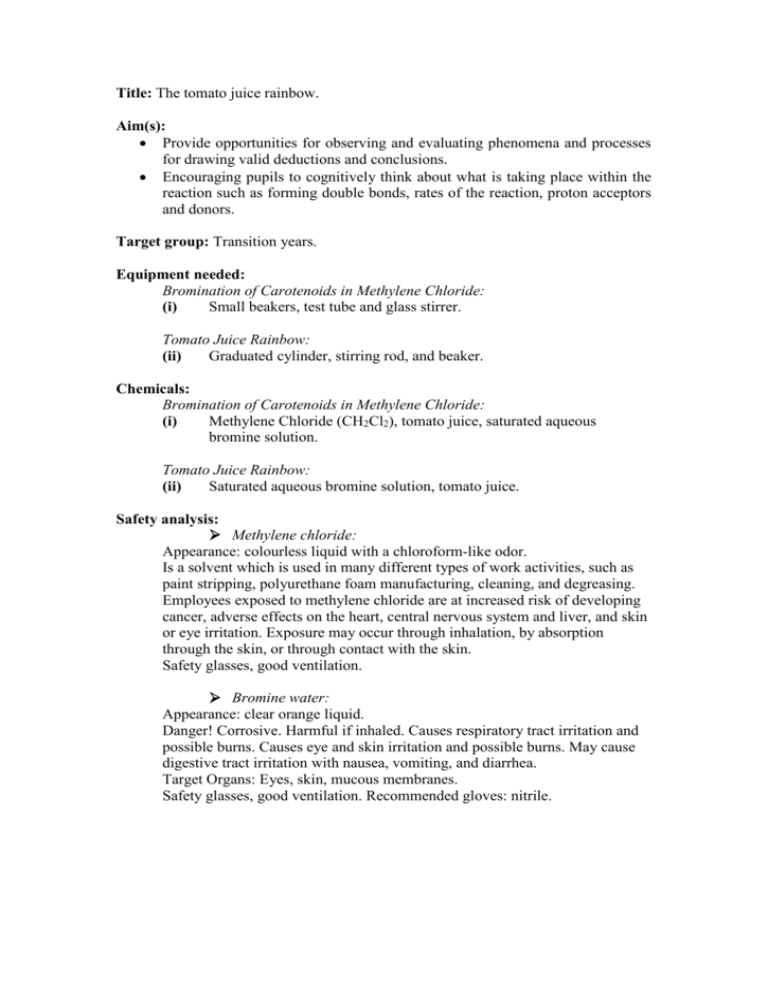
Title: The tomato juice rainbow. Aim(s): Provide opportunities for observing and evaluating phenomena and processes for drawing valid deductions and conclusions. Encouraging pupils to cognitively think about what is taking place within the reaction such as forming double bonds, rates of the reaction, proton acceptors and donors. Target group: Transition years. Equipment needed: Bromination of Carotenoids in Methylene Chloride: (i) Small beakers, test tube and glass stirrer. Tomato Juice Rainbow: (ii) Graduated cylinder, stirring rod, and beaker. Chemicals: Bromination of Carotenoids in Methylene Chloride: (i) Methylene Chloride (CH2Cl2), tomato juice, saturated aqueous bromine solution. Tomato Juice Rainbow: (ii) Saturated aqueous bromine solution, tomato juice. Safety analysis: Methylene chloride: Appearance: colourless liquid with a chloroform-like odor. Is a solvent which is used in many different types of work activities, such as paint stripping, polyurethane foam manufacturing, cleaning, and degreasing. Employees exposed to methylene chloride are at increased risk of developing cancer, adverse effects on the heart, central nervous system and liver, and skin or eye irritation. Exposure may occur through inhalation, by absorption through the skin, or through contact with the skin. Safety glasses, good ventilation. Bromine water: Appearance: clear orange liquid. Danger! Corrosive. Harmful if inhaled. Causes respiratory tract irritation and possible burns. Causes eye and skin irritation and possible burns. May cause digestive tract irritation with nausea, vomiting, and diarrhea. Target Organs: Eyes, skin, mucous membranes. Safety glasses, good ventilation. Recommended gloves: nitrile. Procedure: Bromination of Carotenoids in Methylene Chloride: Place approximately equal volumes of CH2Cl2 and tomato juice into a test tube, stir well and shake the CH2Cl2 to the bottom of the test tube. The lycopene and other caroteniods partition into the CH2Cl2 layer giving it a reddish colour. Add a few drops of a saturated aqueous bromine solution are added to this layer, fast colour changes are observed before it becomes colourless. Tomato Juice Rainbow: Place a measured amount of tomato juice into any cylindrical container; add an amount of saturated bromine water that is 10-15% of the volume of tomato juice used. Mix in the bromine water by gentle swirling with a stirring rod. Varying the amount of bromine water used and the method of stirring gives different effects. To show that the various colours produced in this experiment are due to increasing concentrations of bromine, 4ml of saturated bromine water may be stirred into 20ml of tomato juice in a beaker. A blue colour is produced which, on successive additions of 1ml aliquots of the bromine water, turns first to blue-green, then green, and finally yellow. Diagrams: Bromine Water: Tomato Juice: Rainbow Sample results/observations: Saturated bromine water, when gently stirred into tomato juice, produces a colourful ‘rainbow’ which persists for hours. Conclusions: The blue colour of the lowest layer in the ‘rainbow’ is thought to be due to the predominance of the CT complex. (A complex between two organic molecules in which an electron from one (the donor) is transferred to the other (the acceptor), becoming generally distributed throughout the latter; subsequent transfer of a hydrogen atom completes the reduction of the acceptor; such complex's are generally highly coloured and may be so observed.) In the layer above, the concentration of the yellow bromine water is sufficiently high that its mixture with the blue gives the green colour observed. In the top layers, there would be a gradual break up of lipid aggregates causing the release of the carotenoids into the aqueous medium where they would be rapidly brominated and become colourless. The thickness of the natural tomato juice is sufficient to maintain the concentration gradient indefinitely. It is concluded that the tomato juice rainbow is caused by the stabilization of the CT complex formed in the first step of the bromination of carotenoids. Possible questions to ask: What is a proton donor/acceptor? What is a lipid? Links to Irish curriculum: Lycopene is a fat soluble carotenoid. Being a strong-antioxidant it helps to prevent many degenerative diseases. Lycopene can be found in red and yellow tomatoes but not in green tomatoes. The double bonds of this red pigmented molecule can be broken using a solution of bromine water. When bromine water is added to tomato juice, bromine is added across the double bonds of lycopene. As this occurs a spectrum of colours emerge depending on the concentration of lycopene. The experiment illustrated the halogenation of alkenes in a very colourful experiment.
